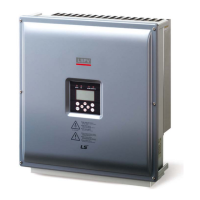21
3.9 Grid line inductance
For better efficiency, large line cross-sections and single wire cables are increasingly used for
power supply lines, especially if local conditions require long supply lines.
The considerable line lengths between LSPV inverter and the transformer station result in a high
cable inductance and therefore an increased line impedance. This presents high resistances for
harmonics of the fundamental frequency (50 Hz) of the line voltage and causes voltage distortions
in the inverters as well as error messages with regard to:
• controller voltage,
• line frequency,
• line overvoltage, and
• sometimes increased operating noise of the transformers.
To avoid these disadvantageous conditions, twisted lines should be used for power supply if possi-
ble. If laying of twisted lines is not possible, the following requirements must be met for single
cores:
• The spacing between single cores may not be too large.
• It is not allowed to lay single cores in closed, magnetically conducting materials (e.g., sheet
steel pipe).
• If laid in open cable ducts, single cores should be laid such that the spacing between them
is as small as possible.
• Single cores should not be laid along magnetic materials.
Note: The sum total of the ohmic and inductive voltage drops on the power
supply line at nominal load should not exceed 1% of the line voltage.
It must be ensured that the line inductance remains < 30 µH.
Minimum spacing
between single cores!

